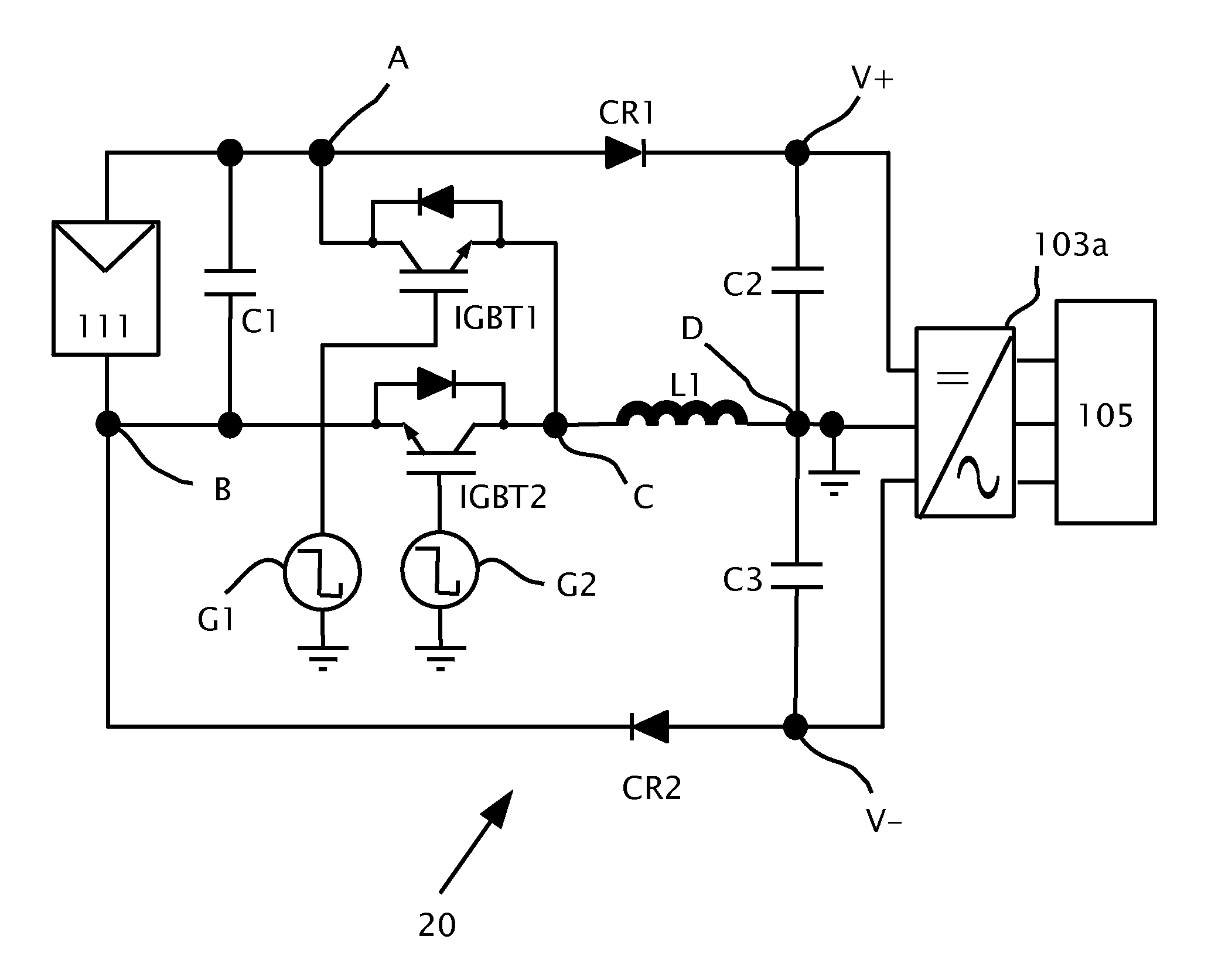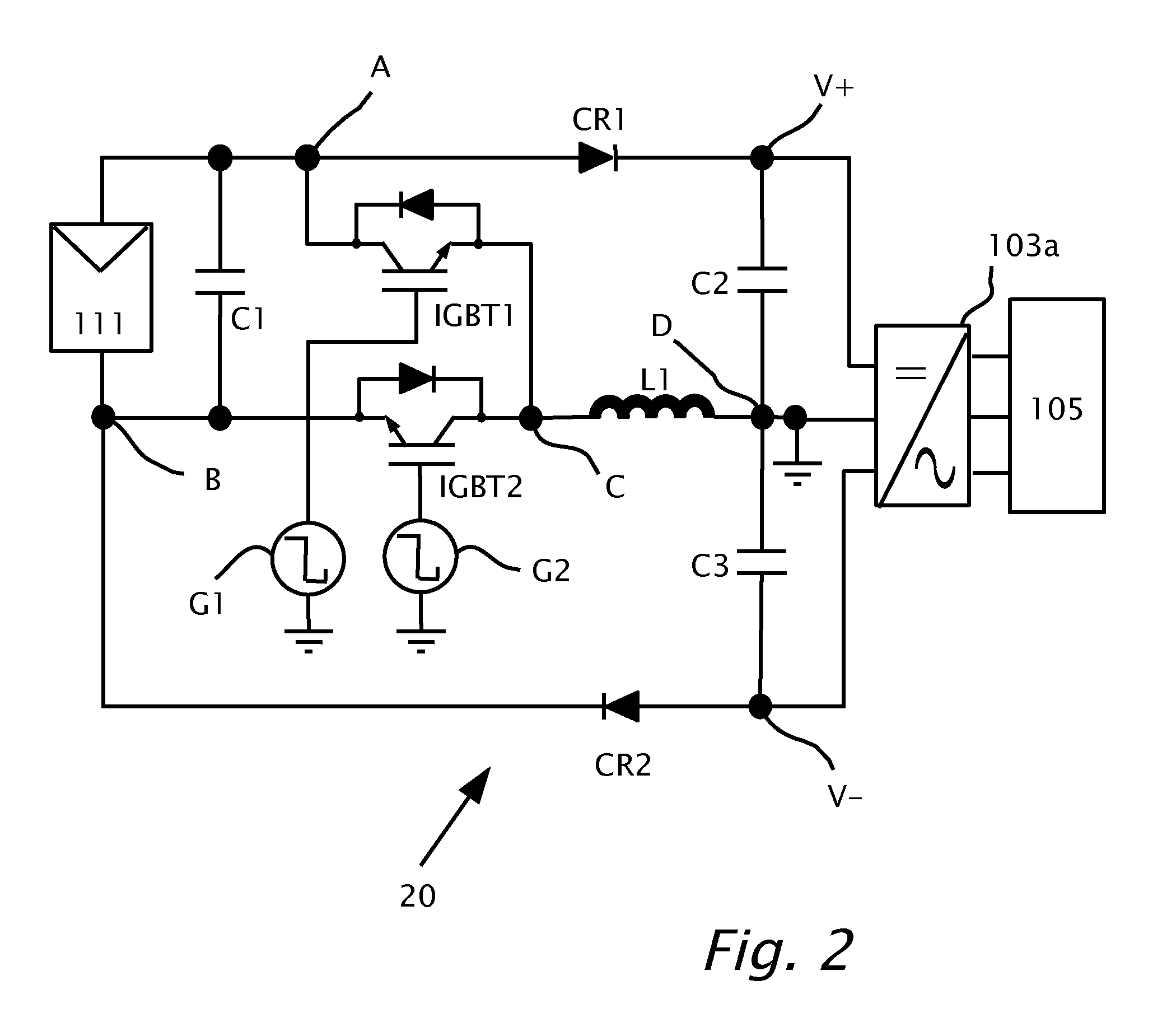Direct current link circuit
a direct current link circuit and direct current technology, applied in the direction of electric variable regulation, process and machine control, instruments, etc., can solve the problems of reducing the overall efficiency of conversion of dc power to three phase ac power, increasing the cost and complexity of additional boost or transformer isolation circuit, and causing problems such as the inability to meet the requirements of the input voltage over 600 volts,
- Summary
- Abstract
- Description
- Claims
- Application Information
AI Technical Summary
Benefits of technology
Problems solved by technology
Method used
Image
Examples
Embodiment Construction
[0013]Reference will now be made in detail to features of the present invention, examples of which are illustrated in the accompanying figures. The features are described below to explain the present invention by referring to the figures.
[0014]Before explaining features of the invention in detail, it is to be understood that the invention is not limited in its application to the details of design and the arrangement of the components set forth in the following description or illustrated in the figures. The invention is capable of other features or of being practiced or carried out in various ways. Also, it is to be understood that the phraseology and terminology employed herein is for the purpose of description and should not be regarded as limiting. For example, the definite articles “a” and “an” used herein, such as in “a switch” and “a DC output” have the meaning of “one or more,” e.g., “one or more switches” and “one or more DC outputs.”
[0015]It should be noted, that although th...
PUM
 Login to View More
Login to View More Abstract
Description
Claims
Application Information
 Login to View More
Login to View More - R&D
- Intellectual Property
- Life Sciences
- Materials
- Tech Scout
- Unparalleled Data Quality
- Higher Quality Content
- 60% Fewer Hallucinations
Browse by: Latest US Patents, China's latest patents, Technical Efficacy Thesaurus, Application Domain, Technology Topic, Popular Technical Reports.
© 2025 PatSnap. All rights reserved.Legal|Privacy policy|Modern Slavery Act Transparency Statement|Sitemap|About US| Contact US: help@patsnap.com



